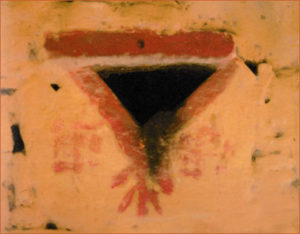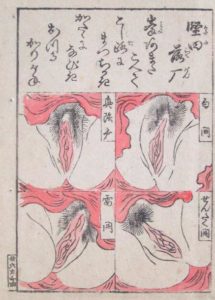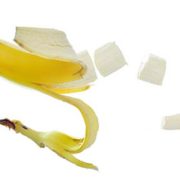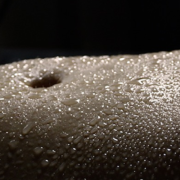Vaginal Ecology: An Owner’s Guide to Care & Maintenance (Pt 1)
 Vaginal Ecology: An Owner’s Guide to Care & Maintenance
Vaginal Ecology: An Owner’s Guide to Care & Maintenance
Part One (Go here for Part Two)
Here’s what you need to know about vaginal health — by understanding the ecology of your vagina you can learn to keep yours healthy, and prevent most vaginal infections and problems. Your vagina is a self-regulating, self-cleaning, resilient yet delicate ecosystem and the less you disrupt the natural balance, the better off you’ll be. This is what every vagina-owner needs to know!
An Elegant System
The vagina isn’t just a nice place to own or visit, nor is it merely a passive space awaiting fulfillment; it’s a complex, integrated environment. Your vagina is a dynamic system with inherent safeguards in place to maintain a healthy equilibrium despite being susceptible to myriad influences that can alter its state of balance. After all, the vagina is exposed to fluctuating hormones, the consequences of our modern diet, our stress-filled lives and numerous artificial products that nature never intended our delicate tissues to withstand. And, of course, Mother Nature did intend our vaginas to have visitors whose presence and leavings can stimulate and impact our vaginal ecosystem. The vagina is well designed to handle many of these influences but sometimes succumbs to influences that cause imbalance, often leading to infection and general grumpiness all around when she’s out of commission.
Vaginal Ecology
Vaginal ecology is the study of the vaginal environment and its interactions. By understanding the ecology, you can better handle your vagina, and keep her happy and healthy by supporting the natural systems. When, despite your best efforts, the normal balance is disturbed and you get a vaginal infection (vaginitis), knowing how your ecosystem works can give you the power to remedy the situation and restore your environment.
Nice and Normal
A normal vagina is constantly kept moist by its slick, slippery and savory natural discharge. (I don’t like that its called discharge though — that sounds yucky — I call it vagina juice.) The smell and taste of a healthy vagina is mild, earthy and slightly pungent with a pleasant, musky aroma. It certainly doesn’t smell like fish or have a strong foul odor. A healthy vagina does not smell or taste bad! In fact, it’s full of sexy scent plus fabulous pheromones, the chemicals of attraction that we don’t consciously smell. Your vaginal juice is a naturally compelling, perfumed invitation.
Juicy Goodness
Vaginal fluid mostly comes from the cells lining the walls, which act similar to sweat glands, producing moisture from the inner mucus membrane surfaces. The rest of the juice is made up of small contribution from several types of glands, located in the cervix and near the vaginal opening. Normal vaginal fluid varies in color from clear to white, although when it dries it may appear yellowish.
The amount differs from one woman to another, as well as for the same woman at different times, and ranges from scant to moderate. Some women are naturally wetter or  drier then others, just as some people have oily skin or dry hair or sweat more or less profusely.
drier then others, just as some people have oily skin or dry hair or sweat more or less profusely.
What’s most important for you as your vagina’s caretaker is to know what’s typical for you in amount, color, texture and odor. The vaginal fluid reflects where you are in your cycle, your age, your sexual arousal, hormonal contraceptive use, even your diet and fluid intake.
For women who are having normal fertility cycles the shifting pattern is usually similar each month. In general, most women are juiciest during the week leading up to and including the day of ovulation. Most women are driest the week before their period. Girls prior to puberty, breast-feeding moms and post-menopausal woman are drier and less varying.
The Vaginal Garden
A healthy vagina is full of friendly bacteria, mainly particular strains of Lactobacillus acidophilus. These good bacteria protect the vagina and keep it healthy in multiple ways. Their job is to control the population of unfriendly microbes such as yeast and ‘bad’ bacteria. They do so first by filling up the space, like a garden which is profusely filled with flowers, leaving no space for weeds. Next, the acidophilus maintain the proper vaginal environment by producing two important chemicals: lactic acid and hydrogen peroxide, a liquid form of oxygen. The lactic acid maintains an acid-alkaline balance (known as pH) in the vagina that’s acidic. Your helpful bacteria also produce hydrogen peroxide to create an aerobic (oxygenated) environment that discourages bad microbes. The beneficial bacteria are the essential hard-working engineers of the ecology of your vagina. When something causes a shift away from the ideal, they get working to bring your ecology back into line.
There’s more! Go here for Part Two.
Want more info on vaginas and related parts? I got more!
Check out my award-winning book, Women’s Anatomy of Arousal.
 You can also explore the online course by the same name, Women’s Anatomy of Arousal Online Course to learn about all things vagina!
You can also explore the online course by the same name, Women’s Anatomy of Arousal Online Course to learn about all things vagina!










